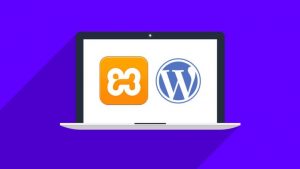How to improve WordPress’ Performance On Mobile & Desktop?
Creating an attractive website won’t suffice, if you don’t have any plans to improve it’s performance. One of the imperative tasks after creative a great website is to make it work in the best possible manner. For that, the priority is to enhance its performance, and make it user and viewer friendly on every browser and on every platform i.e. on both the iOS and the Android.
Most people have optimized their site in one way or another, but have you ever specifically done anything for your mobile visitors?
Fortunately, you can implement numerous techniques to boost up the WordPress’ performance.
Let me tell you that more traffic comes from mobile than from the desktop, and the intention is to keep this number growing.
People are increasingly using their devices, and they are demanding that you facilitate their access to your site.
Though, many sites other than a simple responsive theme, are not optimized for the mobile. It’s not enough to move your site layout around for small screens to engage and convert your mobile visitors. You have to make sure that your mobile site is quick, easy to use and specifically designed for small screens.
Most frequently asked question:
How to increase the speed of the WordPress mobile website?
There are a number of ways to improve the speed of the WordPress platform for phones.
Here I’m sharing a few tools you’ll find useful to increase the pace of your website.
1. Use responsive and lightweight themes and plugins
On a desktop your website might look amazing. But if you don’t use a responsive theme that can adjust the content to different screen sizes, then you’re losing out on a huge chunk of mobile users.
There’s no need to run a custom mobile site alongside your standard desktop site, with a responsive mobile-optimized theme.
2. Reduce Server Response time
Your server (hosting) is the # 1 component in the optimization manual for WordPress.
To check your server response time(https://web.dev/time-to-first-byte/), run your site via Google PageSpeed Insights, which should be < 200ms as recommended by Google. GoDaddy and EIG(https://onlinemediamasters.com/endurance-international-group-hosting-brands/) are popular for weak servers (Bluehost, HostGator, iPage, Site5). This is frequent on Twitter(https://twitter.com/DaveMathF/status/1133893233505898501) and in Facebook Groups.
Normally, SiteGround and Cloudways are # 1 and # 2 respectively. Many people have already migrated and posted on Twitter their new load times-the difference can be up to 8 seconds at times.
Depending on your budget and needs, both SiteGround (shared) and Cloudways (cloud) are decent choices but all are better worlds than GoDaddy and EIG(Endurance International Group).
SiteGround and Cloudways will both migrate you for free.
TIP 1: Activate mobile caching in your cache plugin, install a mobile-adaptive images plugin, and consider AMP to speed up your WordPress mobile site. Optimizations such as using properly sized images, a CDN, and reducing response times for servers will also transfer from desktop to mobile.
3. Use Caching for Desktop and Mobile
Browser Caching – Use Web Caching to improve the pace of the WordPress mobile site after the first visit.
Minify CSS & JS – Minifying CSS and JavaScript to decrease the size of the mobile WordPress platform and reduce the amount of requests.
Defer JavaScript – Defer JavaScript Parsing can help you load important files for the First Contentful Paint faster.
Eliminate Render Blocking Resources – Eliminating Render Blocking JavaScripts would be of better benefit to your site’s Rander First Meaningful Paint.
Delete Unused CSS – Removing Unused CSS can significantly decrease the page size, but mobile optimization is not easy.
Gzip Compression – Allow Gzip compression from server to deliver Compressed and Small Files.
Delete Query Strings -Detach Query Strings from Static Resources to prevent issues related to tab caching.
Allow Keep-Alive – Enabling Keep-Alive will instruct your server to produce the file optimally.
Bonus – Htaccess Hacks to improve mobile Website security for WordPress.
4. Desctivate or Uninstall unused plugins
Holding your WordPress websites unused plugins would add a massive amount of garbage to your web files. In addition, it will also increase your backup size and place an enormous amount of load on your server resources while backup files are being made.
It’s better to get rid of the plugins you don’t use, and also look for alternative ways to use third-party services to automate or schedule tasks (such as posting your latest posts to social media).
IFTTT or Zapier are two web services that help you simplify certain activities and reduce the website and server resources burden.
5. Consider a Mobile Application
I noted at the beginning of the article that mobile internet use has outgrown the desktop. The thing I didn’t notice is that most internet time is spent in software on a smartphone.
iOS account for 89 per cent of the time spent on social devices, while the other 11 per cent spent on apps. — Insightful observations
Part of mobile optimization is creating a personalised mobile experience for your audience, as well as a native mobile app for many companies. Apps make for a more oriented, smoother experience, as well as features not available on the web. Off-line access and email alerts, for example.
You can also sell through the iOS and Android app stores, providing you with another touch point to communicate with your customers.
Many organisations may take advantage of a mobile app to support their website. There are several ways to make an app, including custom creation or a builder of the DIY apps. If you have the budget for it, custom app creation is a great way to get an app developed. App builders are a dime a dozen but not all of them combine on the same level with WordPress. A tool such as AppPresser primarily focuses on WordPress-based websites, and can help you build an app affordably.
TIP 2: Use Google’s Mobile friendly Test tool(https://search.google.com/test/mobile-friendly) which is very useful when you want to know if your website is accessible to mobile users. Or what areas your attention needs to make mobile-friendly.
The famous search engines are cracking down on not mobile-optimized pages. Thus, hearing it straight from the horse’s mouth will help you identify the areas of your website that need improvement.
FINAL THOUGHTS…
These five tips and tricks can help you get on the road to optimizing WordPress website for desktop & mobile users.
It is suggested you should monitor the performance of your site on both your smartphone and desktop. This will help you understand exactly what user experience your guests are receiving. Therefore, you can continue to tweak your site to enhance user experience and results. Your priority should be to maintain a mobile-friendly website.
Focus on speeding up the website load time for mobile users while you are doing nothing else. It is the most important thing that you can do, by far.
A responsive theme can help boost the readability of your site on small screens but you should also consider developing a mobile-only experience.
Don’t take functionality away from the web, just make sure your mobile users are easy to find out what they’re looking for.
Finally, make sure that you keep track of your success with Google Analytics or another tool, as what is calculated is done.



